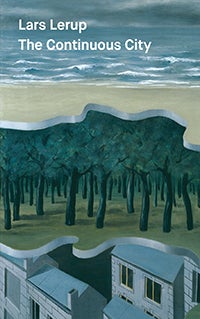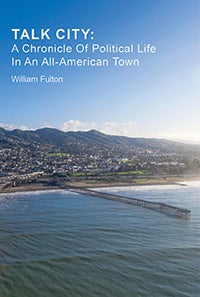Faculty Books: Fall 2018

The Continuous City: Fourteen Essays on Architecture and Urbanization
By Lars Lerup (Park Books, 2018)
The need to redefine the concept of a city, and to find solutions in architecture for the impending catastrophes of modern society, drive the narrative in “The Continuous City,” the third book by Swedish-American architect Lars Lerup, the Harry K. and Albert K. Smith Professor of Architecture.
In a series of essays on urban structures and conditions, Lerup posits that the word “urban” applies to nearly everything we experience. “The urban is inescapable. The city is everywhere,” he writes. “It is continuous both spatially and temporally. Even the so-called wilderness is urban. A hiker standing on a peak in the Sierra is decked out in the latest gear purchased in the urbanized valley below.”
Lerup’s previous work has focused on the intersection of the natural world and human culture in urban environments — especially Houston — and it still does, but its horizons are broader. Here, he argues that by thinking of the world in outdated binaries — urban vs. rural, city vs. suburb, natural vs. man-made — we limit our ability to think differently about some of the problems urbanization has generated: problems like climate change, resource scarcity and socio-economic disparity. Lerup is optimistic that architecture can help us chart a path forward, but only if we accept that the boundaries established long ago, when the city was “a discrete object sitting on a Tuscan hill surrounded by a … wall,” no longer exist and that, as he puts it, “everything flows.”

Muslims in America: Examining the Facts
By Craig Considine (ABC-CLIO, 2018)
Are Muslim immigrants a security risk? Is the U.S. home to a bunch of “radical” mosques? Are Muslim women oppressed? Craig Considine’s new book sets out to address these and other controversial questions — 31 in total — about Muslim-Americans. It’s the latest title in the Contemporary Debates series of reference books. Think of it as a sociological version of “MythBusters.”
Considine, a sociology lecturer at Rice who happens to be Catholic, has devoted a good deal of his research to Islamophobia and to Christian-Muslim relations in the U.S. and throughout the world. “There has never been an America without the presence of Muslims,” he writes. “Yet American Muslims have been increasingly branded as an ‘un-American’ and unassimilable population that poses a societal and security threat to the United States.”
Using a simple Q&A format (Question 14: “Are there actual jihad training camps in the U.S.?” Answer: “No.”), Considine springboards from straightforward yes-or-no answers into a richly nuanced, thoroughly researched selection of studies and statistics to provide context for the controversies. The disturbing takeaway: The more these misconceptions circulate unchecked, the more dangerous America becomes for Muslims — and for all Americans.

Talk City: A Chronicle of Political Life in an All-American Town
By William Fulton (Solimar Books, 2017)
William Fulton, the director of Rice’s Kinder Institute for Urban Research, cut his teeth on urban affairs in municipal government, first as director of planning and economic development in San Diego, then as a city council member in Ventura, Calif., where he ultimately became mayor. The glamorous — or maybe not so glamorous — life of a public servant is the subject of “Talk City.”
Based on a blog Fulton describes as “a pretty interesting chronicle of what it was like to serve as an underpaid, overstressed, part-time local elected official during hard times,” the book gives readers an inside look at five-hour meetings on parking management, planning ordinances and efforts to keep the city solvent during the 2008 recession. It’s more fun than it sounds, thanks to Ventura’s “lively, colorful and sharp-elbowed political scene.”
Trying to keep all sides happy was a quixotic task, and Fulton sometimes laments constituents’ inherent skepticism of the methods, motives and sincerity of their elected officials. Ultimately, however, he proves himself to be a politician of the people. One time, he was approached by a man “wearing all black with several tattoos … accompanied by his wife and daughter, both of whom were dressed in all black with heavy dark makeup. ‘Mayor Fulton,’ he said, ‘I just wanted to say we love what you’re doing. … We were wondering — how can the Goth community get more involved?”
— Jennifer Latson
